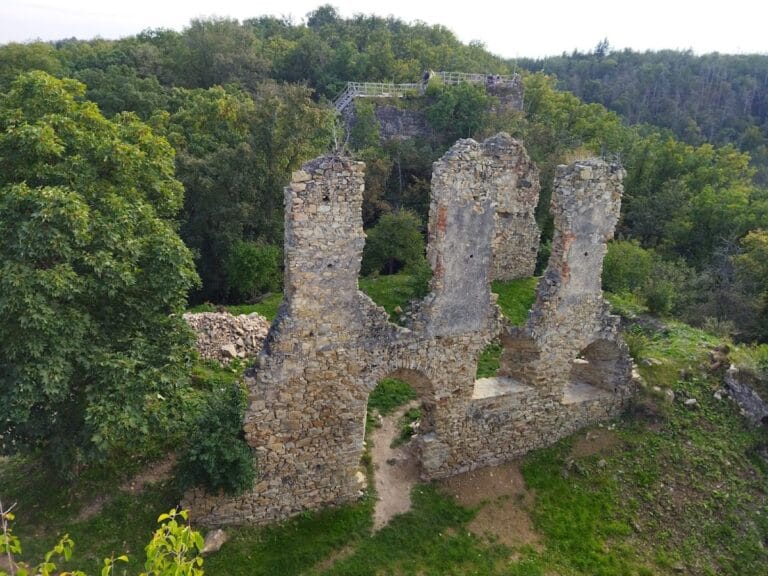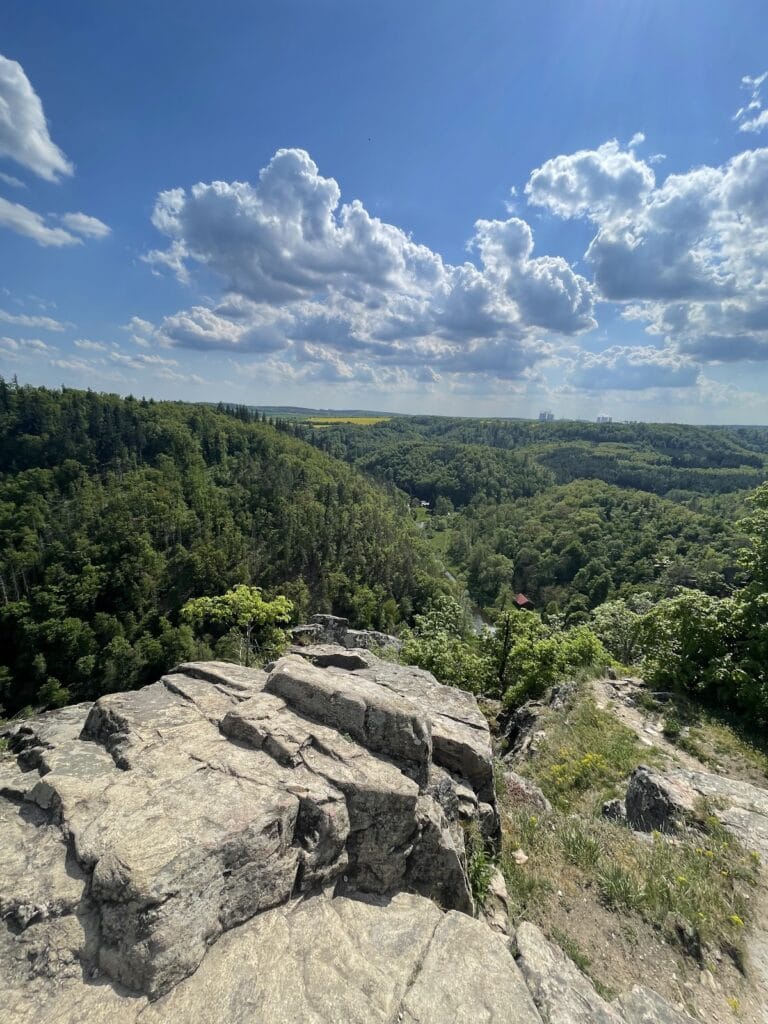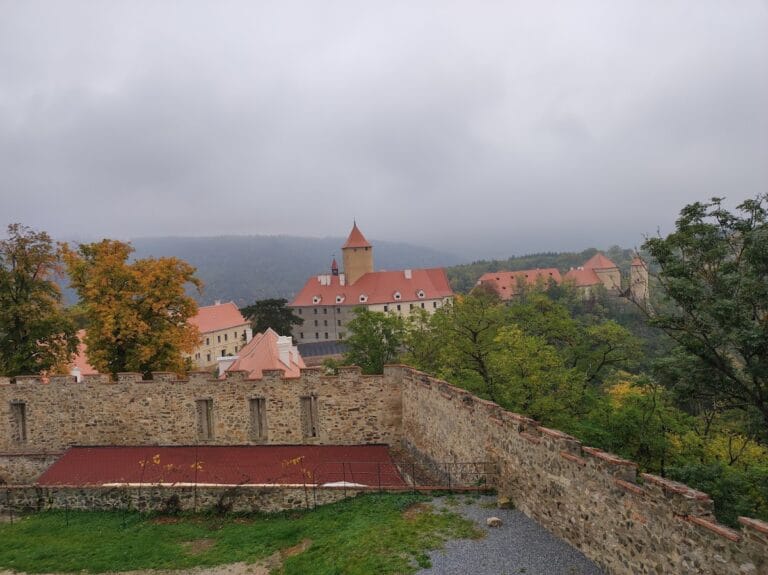Zámek v Dolních Kounicích: A Historic Renaissance Chateau in the Czech Republic
Visitor Information
Google Rating: 4.3
Popularity: Low
Google Maps: View on Google Maps
Official Website: www.zamekkounice.cz
Country: Czechia
Civilization: Medieval European
Remains: Military
History
Zámek v Dolních Kounicích is situated in the municipality of Dolní Kounice in the Czech Republic. Its origins trace back to the medieval era when it was established by a religious community known as the Premonstratensian order.
The earliest phase of the site’s history is connected with Vilém of Pulín, a noble whose coat of arms dates to 1162. He founded the Rosa Coeli monastery nearby in 1181, fulfilling a papal penance. This monastery became central to the area’s spiritual and economic life. Around 1330, the Premonstratensians constructed a Gothic castle on the ridge above the Jihlava River, using a fortified position that had existed earlier to protect a river crossing and important trade routes.
In the 16th century, following the dissolution of the monastery, ownership of the castle transferred to Moravian Margrave and King Ferdinand I. In 1537, Ferdinand sold the property to Jiří Žabka of Limberk, who initiated extensive renovations to convert the medieval fortress into a Renaissance-style noble residence. This transformation reflected changing architectural trends and the site’s shift from purely defensive purposes to a more comfortable and representative home.
Later Renaissance modifications took place near the turn of the 17th century under the Drnovský family, who further altered the castle’s appearance and function. However, after the defeat of the Bohemian Estates uprising in 1620—a significant event tied to resistance against Habsburg rule—the Drnovský family lost the estate in 1622 when their properties were confiscated. The castle then came under the ownership of the Dietrichstein family, who used it primarily as an administrative center rather than a noble residence.
In 1862, the Herberstein family acquired the castle and repurposed it to support agricultural activities. This change of use affected some of the interior spaces, as the structure’s role shifted away from aristocratic living toward practical farm management. Throughout the 20th century, the castle passed through several different owners and was ultimately nationalized in 1974. From 1986, it was managed by various state institutions, including the Moravian Library.
After the fall of communism, the property was returned to the Edl family in 1992. Soon after, it was sold to a private company, L.V.P., which began extensive restoration efforts starting in 2006. These efforts aimed to preserve the historical character of the castle. The site has since been used for cultural and private events, with plans established for its future adaptation as a tourist resort. In 2022, the castle was listed for sale with a valuation estimated at 500 million Czech crowns.
Remains
The castle at Dolní Kounice is a Renaissance chateau constructed on a hill overlooking the Jihlava River. It is located close to the ruins of the former Rosa Coeli monastery, highlighting its historic connection to the Premonstratensian order and its strategic placement near trade routes and river crossings. The structure combines Renaissance architectural elements with remnants of its original Gothic fortress, illustrating the layers of construction that reflect its evolving use over centuries.
Among the notable surviving features is the Žabka staircase, named after the noble family that once owned the castle. This staircase is a key Renaissance addition providing access within the castle and stands as a preserved example of period craftsmanship. Another prominent interior space is the green knight’s chamber, which retains details that hint at its historical decorative style and possible symbolic significance.
Beneath the castle lie extensive underground areas whose original function may have been connected to storage, defense, or service spaces. These subterranean constructions have survived in relatively good condition, offering insight into the castle’s complex layout beyond its visible structures.
Over time, parts of the castle were modified or re-used to suit changing needs, especially when the Herberstein family adapted the building for agricultural purposes in the 19th century. Despite these changes, efforts in the late 20th and early 21st centuries have focused on conserving the essential architectural elements. These partial restorations aim to protect both the Gothic and Renaissance features that contribute to the castle’s designation as a cultural monument, ensuring its historical attributes remain recognizable.
Together with the nearby ruins of the Rosa Coeli monastery, the castle’s remains form a spatial and historical ensemble that reflects the intertwined religious, economic, and noble influences shaping the site over the centuries.







